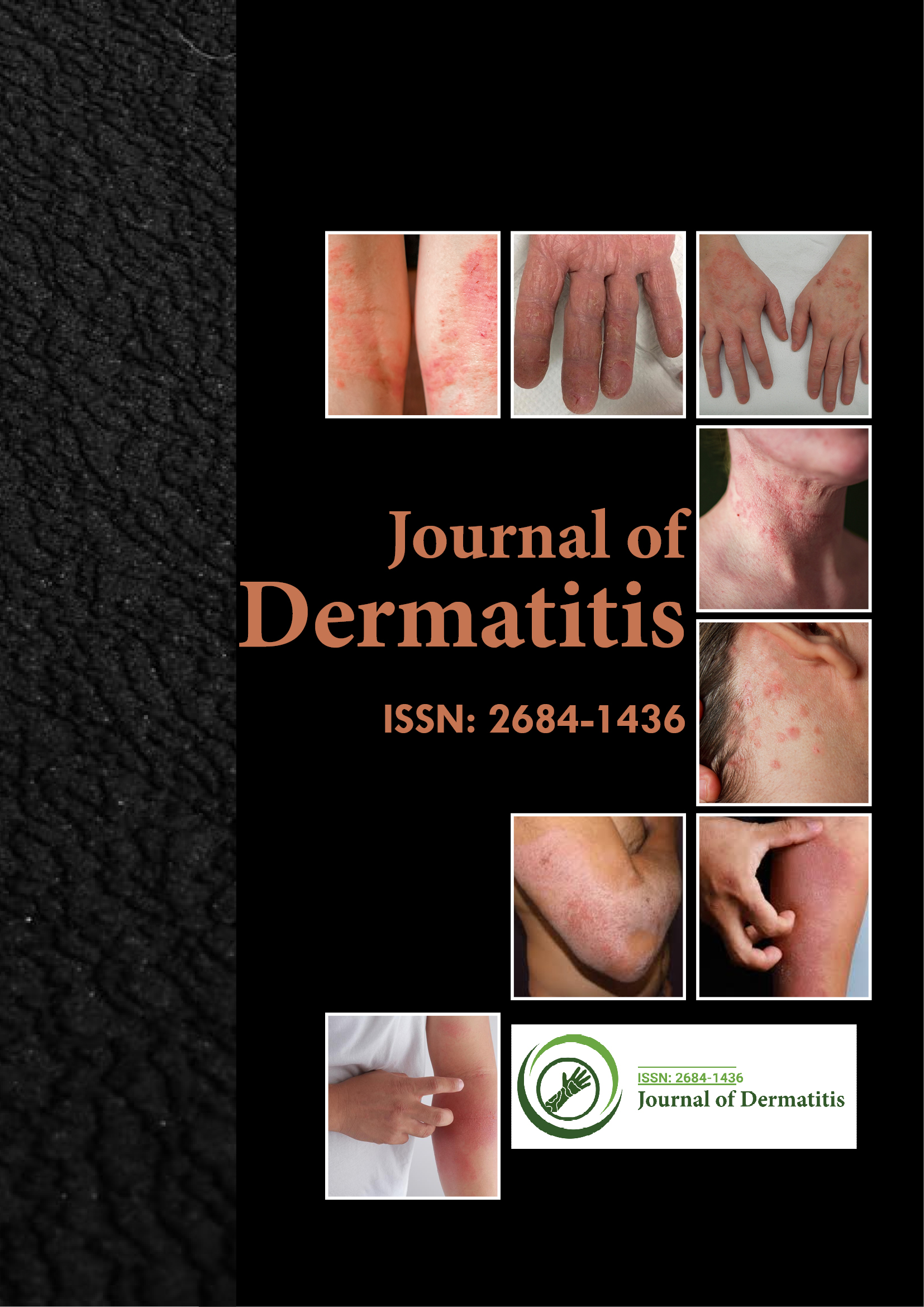Indexed In
- RefSeek
- Hamdard University
- EBSCO A-Z
- Euro Pub
- Google Scholar
Useful Links
Share This Page
Journal Flyer

Open Access Journals
- Agri and Aquaculture
- Biochemistry
- Bioinformatics & Systems Biology
- Business & Management
- Chemistry
- Clinical Sciences
- Engineering
- Food & Nutrition
- General Science
- Genetics & Molecular Biology
- Immunology & Microbiology
- Medical Sciences
- Neuroscience & Psychology
- Nursing & Health Care
- Pharmaceutical Sciences
Commentary - (2023) Volume 8, Issue 1
Evaluation of the Epidemiology and Etiology of Widespread Skin Infections
Wang Zheng*Received: 02-Jan-2023, Manuscript No. JOD-23-20641; Editor assigned: 04-Jan-2023, Pre QC No. JOD-23-20641 (PQ); Reviewed: 18-Jan-2023, QC No. JOD-23-20641; Revised: 25-Jan-2023, Manuscript No. JOD-23-20641 (R); Published: 01-Feb-2023, DOI: 10.35248/2684-1436.23.08.179
Description
The skin is the largest organ of the body and serves as a protective barrier between the body and the external environment. It is constantly exposed to a various microorganisms like bacteria, fungi including viruses, which can cause a range of skin infections. Viral skin infections are caused by a variety of viruses and can range from mild to severe. In this article, we will discuss the causes and treatment of viral skin infections and various harmful viruses.
Causes of viral skin infections
Viral skin infections are caused by several harmful viruses, including:
Herpes simplex virus: Herpes Simplex Virus (HSV) is a common virus that causes cold sores and a genital herpes. The virus spreads through direct contact with an infected person's skin, mucous membranes, or body fluids.
Human papillomavirus: Human Papillomavirus (HPV) causes warts on the skin and mucous membranes. HPV spreads through direct contact with an infected person's skin.
Varicella-zoster virus: Varicella-Zoster Virus (VZV) causes chickenpox and shingles. The virus spreads through contact with the fluid from the blisters of an infected person.
Molluscum contagiosum virus: Molluscum Contagiosum Virus (MCV) causes small, raised, and pink or white spots on the skin. MCV spreads through direct contact with an infected person's skin.
Measles virus: Measles virus causes a highly contagious viral infection that can cause skin rashes. The virus spreads through contact with droplets from an infected person's nose or mouth.
Treatment of viral skin infections
Treatment for viral skin infections depends on the severity and type of infection. Here are some common treatments:
Antiviral medications: Antiviral medications are used to treat viral skin infections caused by herpes simplex virus, varicellazoster virus, and other viruses. These medications can help to reduce the severity of symptoms, shorten the duration of the infection, and prevent complications.
Topical treatments: Topical treatments such as creams and ointments can be used to treat viral skin infections caused by human papillomavirus and molluscum contagiosum virus. These treatments work by stimulating the immune system to fight the virus.
Cryotherapy: Cryotherapy is a treatment that uses liquid nitrogen to freeze and destroy the infected tissue. It is commonly used to treat warts caused by human papillomavirus.
Antibiotics: Antibiotics are not effective against viruses, but they may be prescribed if a bacterial infection develops as a complication of the viral skin infection.
Prevention of viral skin infections
Preventing viral skin infections is possible by following some basic hygiene practices. Here are some tips:
• Wash hands regularly with soap and water.
• Avoid sharing personal items such as towels, razors, and clothing.
• Cover the mouth and nose when coughing or sneezing.
• Avoid touching the face or eyes.
• Stay away from people who are sick.
In conclusion, viral skin infections can cause a range of symptoms from mild to severe. Understanding the causes, symptoms, and treatments of viral skin infections can help to identify and manage them effectively. If suspect that have a viral skin infection, seek medical attention to receive appropriate treatment.
Citation: Zheng W (2023) Evaluation of the Epidemiology and Etiology of Widespread Skin Infections . J Dermatitis.8:179.
Copyright: © 2023 Zheng W. This is an open-access article distributed under the terms of the Creative Commons Attribution License, which permits unrestricted use, distribution, and reproduction in any medium, provided the original author and source are credited.

